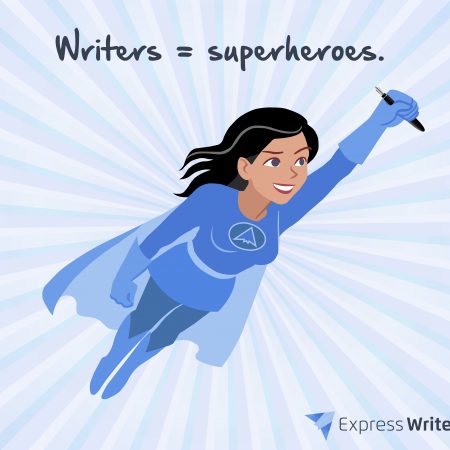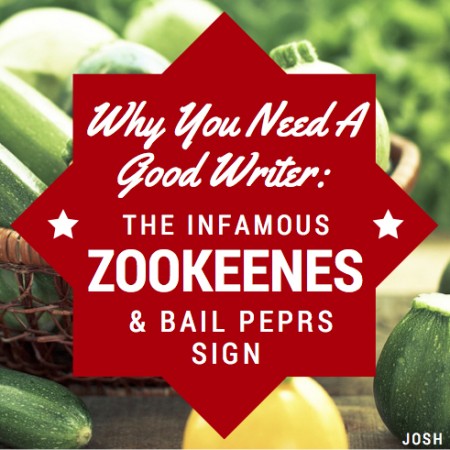Despite the Growth of Automation, Here’s Why Human Writers Aren’t Going Anywhere
“Hello, this is Sarah with Express Writers?” “Yes, hi. We’re a content automation company and need your services.” “I’d love to help. Can you explain your needs?” “Well, we’ve built software to create content that hits target audiences and is personable, but we really need human writers to add words and basically clean up the text. How good are your writers?” “They are great at writing–they’re actually human! We’d love to help.” ** I wish I could say we snuck in that sarcastic sentence at the end, but Sarah is actually much nicer than that. She’s one of our Content Specialists who answers our phones daily—and that was a call she got earlier this year. We aren’t disclosing company names for privacy reasons, but believe us when we say that a large automation company actually called in after they saw us on Google to confess that their “content automation” needed the human touch. And they’re not the first company to feel that way. [clickToTweet tweet=”In order to succeed today, you need to get personal, and this is something only actual people can do. -@ExpWriters” quote=”In order to succeed with today’s customers, you need to get personal, and this is something only actual people can do well. This isn’t likely to change anytime soon.”] Why Automation Will Never Replace Human Writers Did you know that 79% of top companies have been using some form of content automation for the last two years? At Express Writers, we use and love tools that allow us to automate some form of our content marketing process: i.e., Buffer for scheduling social media posts and visuals, KWFinder for honing down the best keywords online, and SEMrush for site audit and online presence analysis. But here’s why automation won’t come close to replacing the human writer. The written copy, the created content that fuels the automation, is always created by humans. Sure, you can plug the copy in any automation tool you want after it’s done, but first: you need real copy, crafted by a human. We rely on human copywriters to create every bit of human content that fuels our content automation part. We have a social media copywriter writing unique posts for every single scheduled post automated to go out in Buffer. We have a blogger and a content editor involved in the process it takes to create every single blog post of ours. The day a business or brand stops relying on humans for the creation part of it all, is the day they set themselves up for failure. On a more technical side, a few years ago WebProNews interviewed the CEO of a leading automation company, and reported that human writers aren’t going anywhere yet, because of the need for the human perspective and qualitative analysis in online content. To further this point, let’s look at what went on when content automation has been attempted. (Because let’s face it, trying to engineer the next automated writer replacement has happened.) A lot…went wrong. The Facts: Stories of Content Automation Attempts that Failed Take a look at content automation that went wrong. Buffer: A Leading Social Media Tool Closes their Social Content Automation Feature Remember the tools I mentioned that we use? Well, one of them, Buffer (a leading social media tool) used to allow you to automatically schedule already-created posts. These were curated and pulled for you in a Suggestions feed. With one click, you could add their “suggested posts” to your feed and schedule – without even reading the content that you’re sharing. It looked like this: Guess what happened to that handy-dandy social media automation feature? They did away with it, announcing that it was closing in 2015. Why? In their own words–it didn’t hold up to the standard of value they believed in, across social media. It encouraged the sharing of content that wasn’t personalized to the person sharing it. Here’s what they said in the announcement: (P.S. We love Buffer all the more for their commitment to truly valuable content sharing in social media.) Now, let’s go deeper. The last time someone tried to use actual robots for the most important part of content marketing, the writing part, things went terribly wrong. Let’s explore the automation failures of history to show you exactly how that happened. Content Automation Gone Terribly Wrong: The Story of Spinners & Content Farms During the days of yesteryear, sneaky content creators tried to devise a way to spin out tons of “quality” content without bothering with hiring actual humans to write, edit, and post it. They did this through a series of “black-hat” SEO tactics including content spinning, content mills or farms, and scraped content. I’m going to break down the key two methods used back then: article spinning, and content farming. #1: Article Spinning (Spun Right Down the Drain) There were actually programs called article spinners – and they still exist today. Take a look at the gibberish that “Free Article Spinner” gives you, once you type or copy in a block of text, enter their captcha, and hit Spin. (Yes, this program is still out there!) Content spinning, using article spinners like these, used to actually be a thing. Black hat SEOs used spinning software to take one article and “spin” it into dozens of new articles at the push of a button. As seen above, content spinning often resulted in low-quality, unintelligible writing that human readers couldn’t even decipher. Google Panda Farmer is one of the main reasons no one is spinning articles anymore. It was one of the biggest algorithms that ever happened (it went down early February 2011), striking down over 11% of the spam on the web, de-ranking all duplicate and most of the spun content, and decreasing by 90% the rankings of big sites like Ezinearticles.com, hubpages.com, Answers.com, Articlesbase.com, and similar places that housed a lot of cheap, thin content written only for SEO. (See a more indepth analyses of Farmer on Searchmetrics.) I like to think that Farmer was Google’s announcement to the web that it’s algorithm was human-based: created for humans, by humans. Not some robotic crap that you could “game.” #2: Content Mills (or Farms): Not Your Old McDonald’s Besides … Read more


